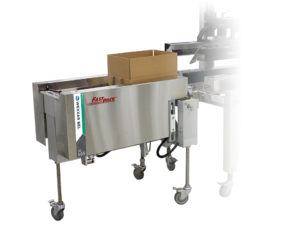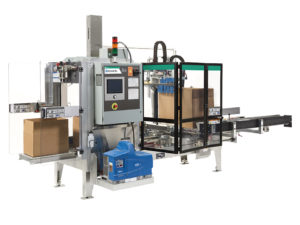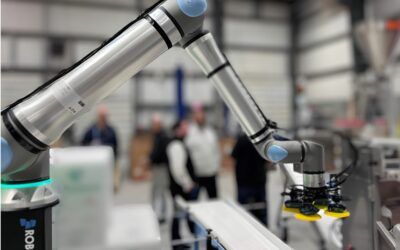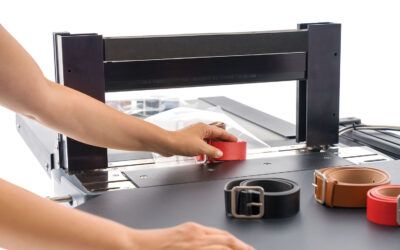Case forming challenges can impede your entire packaging operations. They cause inconsistent packaging prone to damage, reduced throughput and overuse of the packaging materials. Below are key factors to consider and improve on, based on the recommendations from the corrugated industry experts like Paper Packaging Canada and case forming equipment leaders like PROMACH’s WexxarBel.
Common case forming challenges
When faced with inconsistently formed cases, here are the top factors to be aware of.
Properties of corrugated material: The properties of corrugated material you choose – its type, age, combination of recycled and virgin fibers – all affect your case forming process. The better fit they are with the products you pack, your packaging process and where and how your boxes will be travelling, the better the results will be.

Adding BEL 505 semi-automatic case former to manual packing lines improves productivity and eliminates extra time needed to set-up and close case bottom flaps prior to loading.
Design and features of the case: Structural design of your case is critical for the efficiency of the case packing process and for the safe delivery of your products to their destination. Be sure to test how well the elements of the box design can withstand your packaging and logistics process.
Weather conditions: Weather conditions can adversely affect the quality and behaviour of corrugated during the forming process. For example, in dry weather, corrugated can get hard and coarse and in wet weather, it can become soft.
There are typically other individual conditions that may affect your case forming process. It is advisable to consult with a packaging specialist to ensure the best outcomes.
How case erectors improve reliability of case forming
To help ensure reliability in case forming, the erecting process is separated into simple steps. Case forming machines use technology to bring these steps together, so that case forming process is seamless, continuous and efficient.
Servo sensors of your case erector help ensure that each step is completed successfully before moving to the next step. This timing can be adjusted to compensate for different types of cases and trays you are forming.
First case separation function ensures each case is separated from the next, before it is erected. This enables each case to be prepped for forming in a required position, resulting in consistent and properly squared cases.

WF20 fully automatic case former with proven Pin-and-Dome technology is trusted by customers who demand the highest quality output and maximum up-time.
The pin-and-dome system is used after the box is open for forming. It can compensate for the variables affecting the quality and behaviour of corrugated boxes. It can erect cases whether they are dusty, wet or have irregular surfaces.
Hot melt system is key for creating a reliable bond between parts of a case. It uses hot glue and compression to create that bond. The bond created by a hot melt system is much stronger than what can be achieved using a mandrill.
The systems mentioned above function seamlessly together in a case forming machine to provide a simple, mechanical solution for forming cases such as Regular Slotted Cases (RSC), Half Slotted Cases (HSC) and Centre Special Slotted Containers (CSSC) or All Flaps Meet (AFM) boxes.
What case erector is right for my packaging operations?
Depending on the nature of the cases you use to pack your products, you have different equipment options: RSC (Regular Slot Container) formers, bliss box formers, tray formers, automatic tray lockers or safe-locking tray formers.
The machines that erect cases and trays can be complex. However, the most reliable machines use mechanics that are simple. They deliver efficient and consistent case forming process.
Contact us today for a case former demo.


